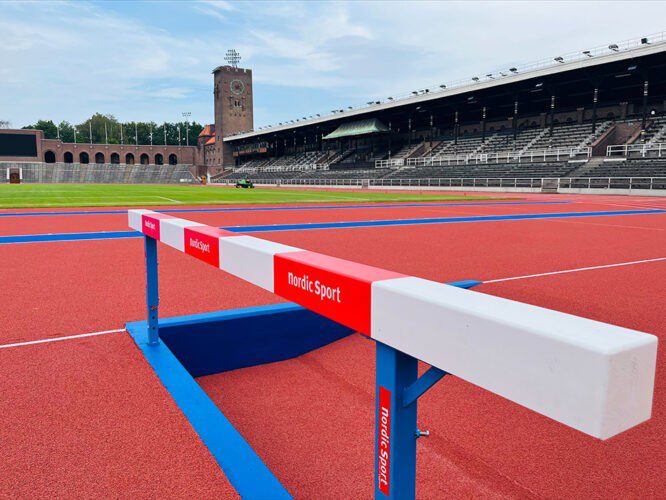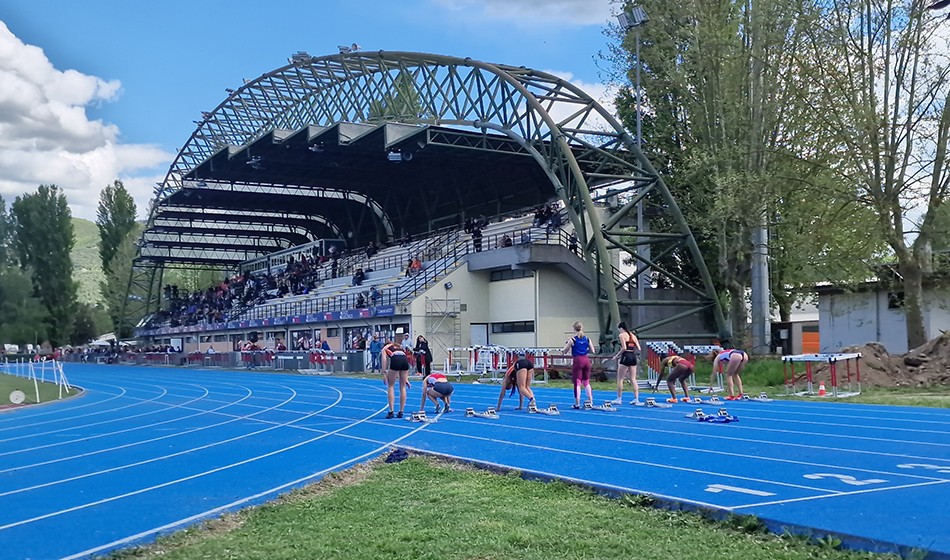A comparison based on facts or two types of synthetic athletics tracks
The choice of the track system has a direct impact on the longevity, performance and sustainability of a sports installation. Although the on -site clues (discharged) have a global standard in international events, training facilities and stages for decades, prefabricated systems are often chosen for high -profile competitions mainly due to reasons related to marketing or association. A neutral look at technical facts reveals significant differentials.
Certification and origin
According to the public certification list available by World Athletics, there are currently 35 certified prefabricated road systems. Notable, the vast majority of these systems originate in Asia, partly China. Only two prefabricated systems currently come from a European manufacturer (Italy). This contrasts with the in situ systems, which are developed and manufactured predominantly in Europe and are backed by a long -standing tradition of high quality lasting surface solutions.
Hardness, elasticity and common erroneous concepts
There is a belief that prefabricated clues are more difficult and, therefore, athletes prefer athletes under the assumption that a tougher track is faster. However, this is an erroneous concept:
- A hard track is not automatically faster. What matters is the balance between hardness and elasticity. Only when both Prerts are optimally aligned, a track can sacrifice maximum performance.
- All clues certified by world athletics must comply with the reduction of the force of defined limits, the key metric used to evaluate hardness. The acceptable range is between 35% (hard) and 50% (soft) force reduction. This means any certified track, if it is in situ or prefabricated, these criteria are found and can be delivered with a desired hardness level (EC, near the lower limit of 35%) if necessary.

The real challenge lies in material aging. “Live” tracks: they harden over time. Prefabricated systems exhibit significantly faster tightening than in situ clues. For main competitions such as Olympic Games, tracks are often installed with a 35% force reduction (the most difficult value allowed). However, in many cases, this value is out of the range allowed after only one year. Since the stadiums are generally certified only each year, such deviations are only discovered later.
In addition, spikes in athlete shoes act like AWLS on hardened prefabricated surfaces. The loss of elasticity combined with the rigidity of the surface can lead to a significant loss of material in the upper layer, especially in high -level areas.
Durability and maintenance
A key advantage of the in situ tracks is its longest useful life and the lowest maintenance costs. The perfect installation on the site creates a homogeneous surface with constant performance in all lanes. The prefabricated tracks, on the other hand, are composed or rolls of material that are glued. This leads to several structural problems:
- Weakness in the joints: the stuck seams are partially vulnerable to mechanical stress and climatic conditions. These first deterioration areas. Temperature and humidity fluctuations cause expansion and contraction. Unlike on situ systems, which behave as a single unit, prefabricated systems develop tension in roll interfaces, often, which leads to visible joint openings. A standard prefabricated track includes at least 4 km or seams.
- Desigual voltage distribution: due to the geometry of the track (EC, the most tight curve or lane compared to the eight or nine lanes), prefabricated systems can exhibit an unequal tension, which leads to a reduced longevity and premature damage.
Another important benefit of on situ systems is the ability to resume the surface of the track, applying a new layer of wear. This sacrifices a sustainable method to renew the track while retaining resources and reduces CO₂ emissions. Prefabricated tracks can only be calmed down using an on -site system that goes back with another prefabricated layer is not feasible. As a result, prefabricated track operators must change to in situ solutions by renewing the surface, which increases complexity and raises technical challenges by combining the two systems.
Repairs are also an important group. Friction of starting blocks in specific locations (EC, 100m, 110 m obstacles, 200 m, 400 m start) or results in early wear on prefabricated tracks. These areas must be replaced after only a few years, which requires mosaic repairs. The resulting surface inconsistencies, in terms of strength reduction and energy return, can have a remarkable impact on athlete biomechanics, especially when they are located inside the oval where most of the race occurs.

Sustainability
Modern on situ systems are increasingly designed to comply with the standards of local atmosphere, including the use of recycled materials and low -emission binders. Prefabricated tracks tend to be back in sustainability due to their intensive production and material, long distance shipping (often of Asia) and limited recyclability.
This is reflected in the decisions of countries with ambitious environmental policies: Germany, Norway and Switzerland rarely use prefabricated systems for their sports facilities, instead of favoring on the tracks of the sites. These decisions are driven by a combination of ecological, technical and economic advantages.
Dynamics and market associations
It is surprising that prefabricated clues are sometimes selected for first -level global events, only although objectively do not meet the highest standards of quality and sustainability. In many cases, this can be attributed to marketing associations and sponsorship agreements. This raises questions, especially in the view of the high standards of world athletics, on the influence of commercial relations in the selection of surfaces.
Conclusion
The facts clearly show that the tracks in situ offer significant advantages over prefabricated systems in terms of:
- Durability and costly
- Uniform performance without structural weak points
- Sustainability through local production and the renewal of efficient resources
- Stable hardness and elasticity values approximately time
For federations, cities and facilities operators, it is worth looking for well -known brands and sponsorships and, instead, focusing on the objective quality criteria for the benefit of athletes, the environment and long -term economic viability.






